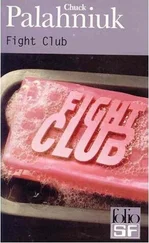Chuck Palahniuk - Tell All
Здесь есть возможность читать онлайн «Chuck Palahniuk - Tell All» весь текст электронной книги совершенно бесплатно (целиком полную версию без сокращений). В некоторых случаях можно слушать аудио, скачать через торрент в формате fb2 и присутствует краткое содержание. Год выпуска: 2010, ISBN: 2010, Жанр: Современная проза, на английском языке. Описание произведения, (предисловие) а так же отзывы посетителей доступны на портале библиотеки ЛибКат.
- Название:Tell All
- Автор:
- Жанр:
- Год:2010
- ISBN:978-0-385-53317-1
- Рейтинг книги:5 / 5. Голосов: 1
-
Избранное:Добавить в избранное
- Отзывы:
-
Ваша оценка:
- 100
- 1
- 2
- 3
- 4
- 5
Tell All: краткое содержание, описание и аннотация
Предлагаем к чтению аннотацию, описание, краткое содержание или предисловие (зависит от того, что написал сам автор книги «Tell All»). Если вы не нашли необходимую информацию о книге — напишите в комментариях, мы постараемся отыскать её.
Tell All — читать онлайн бесплатно полную книгу (весь текст) целиком
Ниже представлен текст книги, разбитый по страницам. Система сохранения места последней прочитанной страницы, позволяет с удобством читать онлайн бесплатно книгу «Tell All», без необходимости каждый раз заново искать на чём Вы остановились. Поставьте закладку, и сможете в любой момент перейти на страницу, на которой закончили чтение.
Интервал:
Закладка:
My vocation is not that of a nurse or jailer,nanny or au pair, but during her periods of highest public acclaim, myduties have always included protecting Miss Kathie from herself. Oh, theoverdoses I’ve foiled … the bogus land investment schemes I’ve stoppedher from financing … the highly inappropriate men I’ve turned away fromher door … all because the moment the world declares a person to beimmortal, at that moment the person will strive to prove the worldwrong. In the face of glowing press releases and reviews the mostheralded women starve themselves or cut themselves or poison themselves.Or they find a man who’s happy to do that for them.
For this next scene we open with a beat ofcomplete darkness. A black screen. For the audio bridge, once more wehear the ring of the doorbell. As the lights come up, we see the insideof the front door, and from within the foyer, we see the shadow of afigure fall on the window beside the door, the shape of someone standingon the stoop. In the bright crack of sunlight under the door we see thetwin shadows of two feet shifting. The bell rings again, and I enterthe shot, wearing the black dress, the maid’s bib-front apron and lacywhite cap. The bell rings a third time, and I open the door.
The foyer stinks of paint. The entire housestinks of paint.
A figure stands in the open doorway, backlitand overexposed in the glare of daylight. Shot from a low angle, thesilhouette of this looming, luminous visitor suggests an angel withwings folded along its sides and a halo flaring around the top of itshead. In the next beat, the figure steps forward into the key light.Framed in the open doorway stands a woman wearing a white dress, a shortwhite cape wrapped around her shoulders, white orthopedic shoes.Balanced on her head sits a starched white cap printed with a large redcross. In her arms, the woman cradles an infant swaddled in a whiteblanket.
This beaming woman in white, holding a pinkbaby, appears the mirror opposite of me: a woman dressed in blackholding a bronze trophy wrapped in a soiled dust rag. A beat of ironicparallelism.
A few steps down the porch stands a secondwoman, a nun shrouded in a black habit and wimple, her arms cradling ababe as blond as a miniature Ingrid Bergman.Its skin as clear as a tiny Dorothy McGuire.What Walter Winchellcalls a “little bundle ofgoy.”
On the sidewalk stands a third woman, wearinga tweed suit, her gloved fingers gripping the handle of a perambulator.Sleeping inside the pram, two more infants.
The nurse asks, “Is KatherineKentonat home?” Behind her, the nun says, “I’m from St.Elizabeth’s.”
From the sidewalk, the woman wearing tweedsays, “I’m from the placement agency.” At the curb, a second uniformed nurse stepsout of a taxicab carrying a baby. From the corner, another nurseapproaches with a baby in her arms. In deep focus, we see a second nunadvancing on the town house, bearing yet another pink bundle.
From offscreen we hear the voice of MissKathie say, “You’ve arrived.…” And in the reverse angle we see herdescending the stairs from the second floor, a housepainter’s brush inone hand, dripping long, slow drops of pink paint from the bristles.Miss Kathie’s rolled back the cuffs of her shirt, a man’s white dressshirt, the breast pocket embroidered with O.D. ,the monogram for her fourth “was-band,” Oliver “Red”Drake, Esq., all of the shirt spotted with pink paint. Abandanna tied to cover her hair, and pink paint smudged on the peak ofone movie-star cheekbone.
The town house stinks of lacquer, choking andacrid as a gigantic manicure compared to the smell of talcum powder andsunlight on the doorstep.
Miss Kathie’s feet descend the last steps,trailed by drops of pink. Her blue denim dungarees, rolled halfway up toher knees, reveal white bobby socks sagging into scuffed penny loafers.She faces the nurse, her violet eyes twitching between the gurgling,pink orphan and the paintbrush in her own hand. “Here,” she says, “wouldyou mind …?” And my Miss Kathie thrusts the brush, slopping with pinkpaint, into the nurse’s face.
The two women lean together, close, as ifthey were kissing each other’s cheeks, trading the swaddled bundle forthe brush. The white uniform of the nurse, spotted with pink fromtouching Miss Kathie. The nurse left holding the gummy pink brush.
Her arms folded to hold the foundling, MissKathie steps back and turns to face the full- length mirror in the foyer.Her reflection that of Susan Haywardor Jennifer Jonesin Saint Joan or The Song of Bernadette , a beaming Madonnaand child as painted by Caravaggioor Rubens. With one hand, my Miss Kathiereaches to the nape of her own neck, looping a finger through the knotof the bandanna and pulling it free from her head. As the bandanna fallsto the foyer floor, Miss Kathie shakes her hair, twisting her head fromside to side until her auburn hair spreads, soft and wide as a veil,framing her shoulders, the white shirt stretched over her breasts,framing the tiny newborn.
“Such a pièce de résistance,” Miss Kathiesays, rubbing noses with the little orphan. She says, “That’s theItalian word for … gemütlichkeit.”
Miss Kathie’s violet eyes spread, wide-open,bug-eyed as Ruby Keelerplaying a virginopposite Dick Powellunder the direction of Busby Berkeley. Her long movie-star hands, hercheeks marred only by the pastel stigmata of pink paint. Her eyesclutching at the image in the foyer mirror, Miss Kathie turnsthree-quarters to the left, then the right, each time closing hereyelids halfway and nodding her head in a bow. She bows once more,facing the mirror full-on, her smile stretching her face free ofwrinkles, her eyes glowing with tears. This, the exact same performanceMiss Kathie gave last month when she accepted the lifetime tribute awardfrom the Denver Independent Film Circle.These identical gestures and expressions.
A beat later, she unloads the infant,returning the bundle to the nurse, Miss Kathie shaking her head,wrinkling her movie-star nose and saying, “Let me think about it.…”
As the nun mounts the porch steps, MissKathie thrusts two fingers into her own dungarees pocket and fishes out acard of white paper.… She holds the sample shade of HoneyedSunsetto the cherub’s pink cheek, studying the card and theinfant together. Shaking her head with a flat smile, she says,“Clashes.” Sighing, Miss Kathie says, “We’ve already painted the trim.Three coats.” She shrugs her movie-star shoulders and tells the nun,“You understand.…”
The next newborn, Miss Kathie leans close toits drowsing face and sniffs. Using an atomizer, she spritzes the tenderlips and skin with L’air du Tempsand thetiny innocent begins to squall. Recoiling, Miss Kathie shakes her head,No.
Another gurgling newborn, Miss Kathie leanstoo close and the dangling hot ash drops off the tip of her cigarette,resulting in a flurry of tiny screams and flailing. The smell of urineand scorched cotton. As if a pressing iron had been left too long on apillowcase soaked in ammonia.
Another foundling arrives barely a shade toopale for the new nursery drapes. Holding a fabric swatch beside thesquirming bundle, Miss Kathie says, “It’s almost PerfectPersimmonbut not quite Cherry Bomb.…”
The doorbell rings all afternoon. All the dayexhausted with “offspring shopping,” as Hedda Hoppercalls it. “ Bébé browsing,” in the semanticsof Louella Parsons. A steady parade ofsecondhand urchins and unwanted kinder . Aconstant stream of arriving baby nurses, nuns and adoption agents, eachone blushing and pop-eyed upon shaking the pink, paint-sticky hand ofMiss Kathie. Each one babbling: Tweet, cluck, hoot … Raymond Massey. A quick-cut montage.
Читать дальшеИнтервал:
Закладка:
Похожие книги на «Tell All»
Представляем Вашему вниманию похожие книги на «Tell All» списком для выбора. Мы отобрали схожую по названию и смыслу литературу в надежде предоставить читателям больше вариантов отыскать новые, интересные, ещё непрочитанные произведения.
Обсуждение, отзывы о книге «Tell All» и просто собственные мнения читателей. Оставьте ваши комментарии, напишите, что Вы думаете о произведении, его смысле или главных героях. Укажите что конкретно понравилось, а что нет, и почему Вы так считаете.




